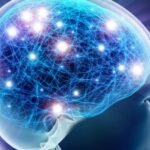Last Updated on December 19, 2023 by SPN Editor
In a groundbreaking study, scientists have utilized artificial intelligence (AI) to analyze images of children’s retinas, achieving a 100 percent accuracy rate in diagnosing childhood autism. This innovative approach underscores the potential of AI as a reliable tool for early diagnosis, particularly in areas where access to specialist child psychiatrists may be limited.
The retina and optic nerve, located at the back of the eye, form a connection at the optic disc. This structure, an extension of the central nervous system, provides a unique window into the brain. Researchers have begun to exploit this easily accessible and non-invasive route to gather crucial information related to the brain and detect childhood autism.
A team of researchers from the Yonsei University College of Medicine in South Korea has devised a method to diagnose Childhood Autism Spectrum Disorder (ASD) and assess symptom severity in children. This method involves the use of retinal images analyzed by an AI algorithm, building upon recent work by UK researchers who developed a non-invasive technique to quickly diagnose concussions using an eye-safe laser shone onto the retina.
The study involved 958 participants, with an average age of 7.8 years, whose retinas were photographed, yielding a total of 1,890 images. Half of these participants had been diagnosed with ASD, while the other half, matched for age and sex, served as controls. The severity of ASD symptoms was evaluated using the Autism Diagnostic Observation Schedule – Second Edition (ADOS-2) calibrated severity scores and Social Responsiveness Scale – Second Edition (SRS-2) scores.
The researchers trained a deep learning algorithm, known as a convolutional neural network, using 85% of the retinal images and symptom severity test scores. This training enabled the construction of models to screen for ASD and assess symptom severity. The remaining 15% of images were set aside for testing.
The AI demonstrated remarkable accuracy in identifying childhood autism with an ASD diagnosis from the test set of images. The mean area under the receiver operating characteristic (AUROC) curve was 1.00, indicating 100% accuracy in the AI’s predictions. This high level of accuracy was maintained even when 95% of the least important areas of the image, excluding the optic disc, were removed.
The researchers noted that their models showed promising performance in differentiating between ASD and typically developing children using retinal photographs. This suggests that retinal alterations in ASD could serve as potential biomarkers. The models retained a mean AUROC of 1.00 using only 10% of the image containing the optic disc, highlighting the importance of this area in distinguishing ASD from typical development.
The mean AUROC value for symptom severity was 0.74, falling within the ‘acceptable’ range of 0.7 to 0.8. The researchers suggested that retinal photographs could offer additional insights into symptom severity. They found that feasible classification was only achievable for ADOS-2 scores, not for SRS-2 scores. This discrepancy may be due to the fact that the ADOS-2 is conducted by a trained professional over a longer period, whereas the SRS-2 is typically completed by a caregiver in a few dozen minutes.
The study included participants as young as four years old. The researchers proposed that their AI-based model could serve as an objective screening tool from this age onwards. However, as the newborn retina continues to grow until the age of four, further research is needed to determine the accuracy of the tool for younger participants.
What is ADOS in the Treatment of Childhood Autism?
The Autism Diagnostic Observation Schedule (ADOS) is a recognized tool for diagnosing childhood Autism Spectrum Disorder (ASD). It employs a mix of structured and semi-structured tasks that encourage social interaction between the individual being evaluated and the examiner.
The ADOS process involves observing and classifying the individual’s behavior. These observations are then amalgamated to generate quantitative scores for further analysis. These scores, derived from research-based cut-offs, aid in identifying a potential ASD diagnosis, offering a standardized measure of autistic symptoms.
The administration of the ADOS typically spans 30-60 minutes. In this duration, the examiner creates numerous opportunities for the individual to display social and communication behaviors pertinent to an autism diagnosis. It’s important to note that the ADOS is not suitable for evaluating nonverbal adolescents and adults.
The ADOS was developed by Catherine Lord, Michael Rutter, Pamela C. DiLavore, and Susan Risi in 1989 and was made commercially available in 2001. An updated version was released in 2012, featuring revised norms, enhanced algorithms for Modules 1 to 3, and a new Toddler Module designed to assess childhood autism aged 12 to 30 months.

